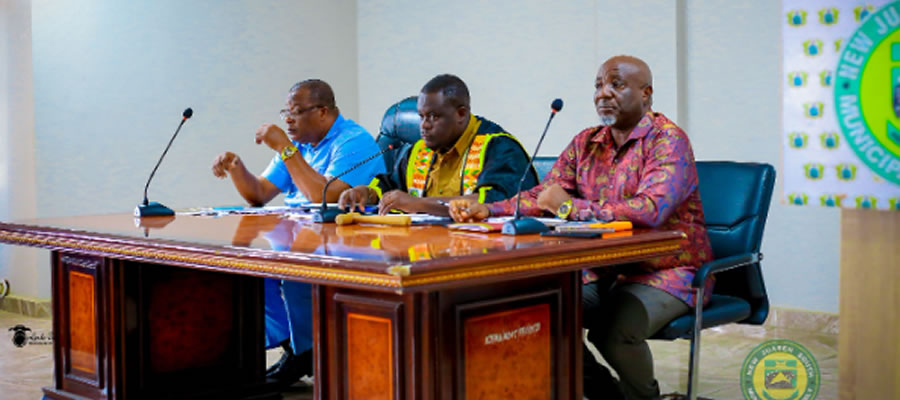

Introduction
The economic characteristics of any population is important for development planning and other purposes. Economic characteristics also provide development indicators that are largely determined by how governments are able to manage their populations and resources in order to provide the needs of their populations to achieve human development goals. The economic characteristics of a population also help in examining population and development interrelationship so that appropriate policies can be adopted. Population and development interrelationship has been a major area of research and policy concern in developing countries, including Ghana. Rapid population increase compound economic stagnation and associated unemployment problems. .
It is against this background that the economic characteristics of the population of the New Juaben Municipality are examined in this chapter. The areas of focus include economic activity status, occupation, industry, employment status of the total population in the Municipality. All of the characteristics are examined with respect to age, marital status and sex which are background characteristics that determine the economic activity and employment status of individuals and population.
Economic Activity Status
Statistics on economic activities are important to users who have an interest in a summary picture of activity covering all seasons. Such data are used in economic and manpower planning and can be particularly valuable as a basis for national accounting estimates. They are less dependent on the timing of the census date and fit in with other statistics determined on an annual basis, such as household income, or statistics reflecting the normal situation for household members, such as enrolment in school. Activity status according to the 2010 Population and Housing Census refers to economic or non-economic activity of respondents during the 7 days preceding census night. Information on type of activity was collected on persons 15 years and older.
From Table 7, the economically active population constitute about two thirds (66.4%) of the population 15 years and older. More than 92 percent (92.7%) of the economically active population are employed. There is no disparity between the sexes with respect to the economically active population who are employed. Majority (96.3%) of the employed population actually worked during the period (7 days preceding the census night) under consideration. The same trend is observed for both men and women. Less than four percent (3.4%) of the employed population did not work but had jobs to go back to with less than one percent (0.3%) reporting as having done voluntary work without pay.
Close to two thirds (62.1%) of the economically not active population are full time education with about 10 percent being too old or too young to work. indicating they are to . students whiles 9.2 percent are either too old or young to work as shown by the table. The proportion of males (69.3%) who are in full time education for which reason they are not economically active is higher than that of females (55.5%).
Occupation
In the 2010 PHC, occupation was defined as economic activities that individuals engaged in to earn a living in cash or in kind. The results of the analysis of the employed population 15 years and older by occupation and sex show that, on the average, three types of occupations constitute the major occupations in the Municipality: those who are engaged in service and sales activities (35.7%), followed by craft and related trades (20.1 %) and lastly professionals (10.8 %).
Almost 27 percent of the economically active male population is engaged in craft and related trades activity. On the whole, the economically active male population engaged in skilled agriculture forestry and fisheries (10.0 %) are above the average percentage figure (8.0%) for the Municipality. In this case, we have more males venturing into skilled agriculture as compared to females.
Strikingly, the female economically active population engaged in service and sale activity (51.2%) is far higher than the average Municipal average (35.7%). On the whole, more females within the Municipality are actively engaged in this sector as compared to male (18.3%).
Date Created : 11/26/2017 3:42:56 PM













 facebook
facebook
 twitter
twitter
 Youtube
Youtube
 +233 593 831 280
+233 593 831 280 0800 430 430
0800 430 430 GPS: GE-231-4383
GPS: GE-231-4383 info@ghanadistricts.com
info@ghanadistricts.com Box GP1044, Accra, Ghana
Box GP1044, Accra, Ghana